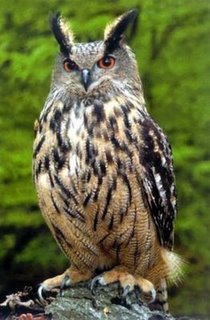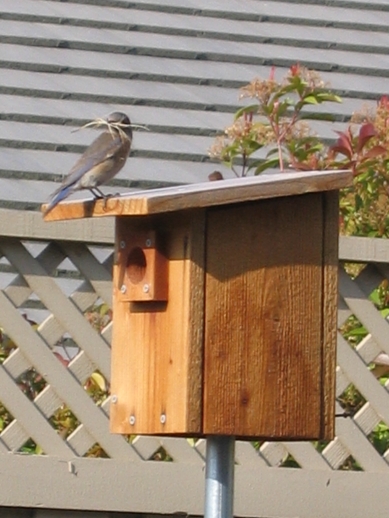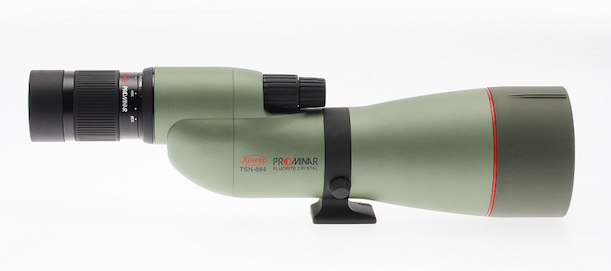by Larry Jordan
on September 16, 2008
 At least that’s what the headline says. The Eagle Owl with its 6ft wingspan, and a body length of nearly 2ft 6in, is bigger than all other British birds of prey except for the golden eagle and the white-tailed eagle. It is twice the size of the tawny owl and the barn owl. The only other land bird to compare with it in size in Britain would probably be the great bustard, which died out nearly 200 years ago.
At least that’s what the headline says. The Eagle Owl with its 6ft wingspan, and a body length of nearly 2ft 6in, is bigger than all other British birds of prey except for the golden eagle and the white-tailed eagle. It is twice the size of the tawny owl and the barn owl. The only other land bird to compare with it in size in Britain would probably be the great bustard, which died out nearly 200 years ago.
Even though this is a huge predator, capable of killing animals as large as roe deer, the headline of threatening British birds seems a bit over the top to me, unless, as the story states, more of these beautiful birds escape from captivity. You see they estimate some 3,000 Eagle Owls are kept by falconers in the UK.
You can read the entire story here: http://mysterytopia.com/2008/09/worlds-largest-owl-threatens-british.html
{ }
by Larry Jordan
on September 15, 2008

California Quail Female and Male all photos by Mark Schmitt
These beautiful game birds are now in the process of forming coveys. Coveys are large groups of birds made up of several families, consisting of parents and their offspring. These coveys can number up to 200 birds. If you have ever come across a covey of Quail you may have been startled as they take off from their hide with a thunderous sound like a helicopter taking off!

Male Guiding His Youngins Across An Open Space
California Quail roost in dense evergreen shrubs or trees, usually close to water. As they awaken from their roost between first light and sunrise you can usually hear a call from one of the males that sounds like he’s from Chi-Ca-Go [audio:https://thebirdersreport.com/audio/CalQuail.mp3]
[continue reading…]
{ }
by Larry Jordan
on September 14, 2008
I am celebrating my first Bloggoversary today! I hope you are all celebrating something you hold near and dear also. I want to mention that I have just returned from an incredible week as a volunteer at an Enlightened Warrior Training Camp in Sanger, California. I have therefore been “off the grid” and unable to post during this time. This was a life changing camp for hundreds of people so if you are interested in Self Improvement and Personal Growth, please check out my page. In the meantime, here is some information for you on choosing the right binocular.
One of the most important things you will have to do when you decide to take up bird watching is to choose the right binocular. The most important thing I want to emphasize is to try them out before you buy. So, I have brought several posts together for you using my “Utility Poster” software so you can explore your options.
Mid-Priced Binoculars Round Up
If you are a birder with between $300 and $800 to spend on a new binocular, what can you get? This is the question for a birder ready for something beyond entry-level binoculars or discount-store offerings, but who can’t afford the close to $2000 that top echelon binoculars cost. [continue reading…]
{ }
by Larry Jordan
on September 6, 2008

Female Bluebird With Nesting Material Atop Nest Box
Birds need protective cover just like people need the shelter of a house. Cover can be provided in many forms such as special plantings, hollow logs and dead tree snags, and brush piles. Plants that bear fruit for food are the best plantings for attracting birds. The ideal bird habitat would include plants ranging in size and density from small evergreen shrubs to tall, full-grown trees. This variety will provide birds a choice for feeding, hiding, courting and nesting.
With more and more destruction of their natural habitat, many birds are having trouble finding places to nest. By providing nesting boxes or birdhouses you will encourage birds to raise their young in your backyard and stay in your area all year. You’ll enjoy watching the family life of birds while providing them badly needed shelter. [continue reading…]
{ }
 At least that’s what the headline says. The Eagle Owl with its 6ft wingspan, and a body length of nearly 2ft 6in, is bigger than all other British birds of prey except for the golden eagle and the white-tailed eagle. It is twice the size of the tawny owl and the barn owl. The only other land bird to compare with it in size in Britain would probably be the great bustard, which died out nearly 200 years ago.
At least that’s what the headline says. The Eagle Owl with its 6ft wingspan, and a body length of nearly 2ft 6in, is bigger than all other British birds of prey except for the golden eagle and the white-tailed eagle. It is twice the size of the tawny owl and the barn owl. The only other land bird to compare with it in size in Britain would probably be the great bustard, which died out nearly 200 years ago.






Social Media Connect